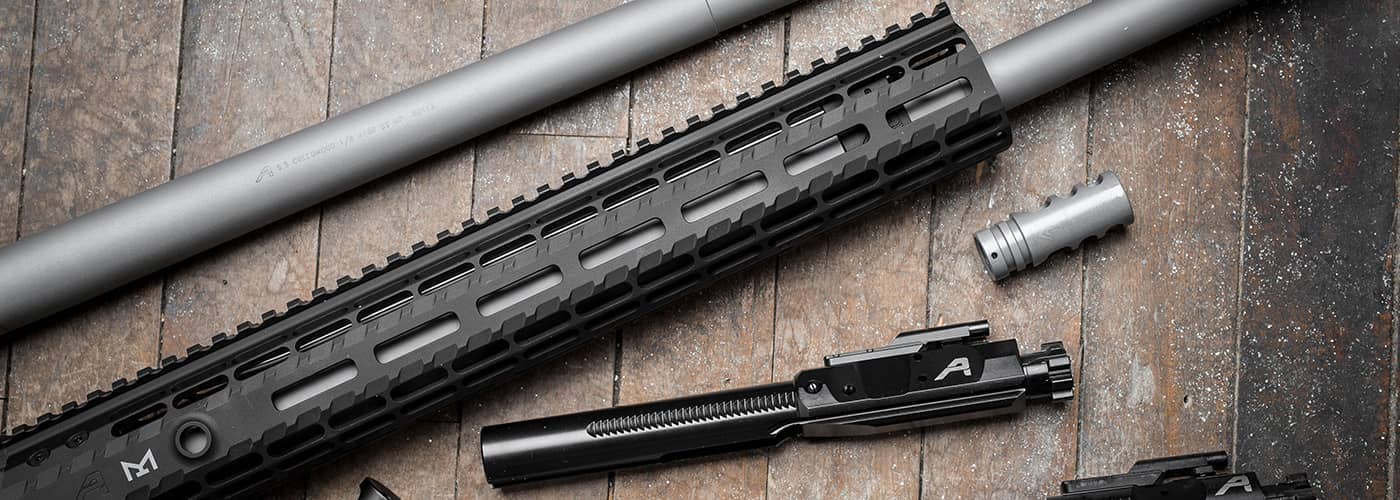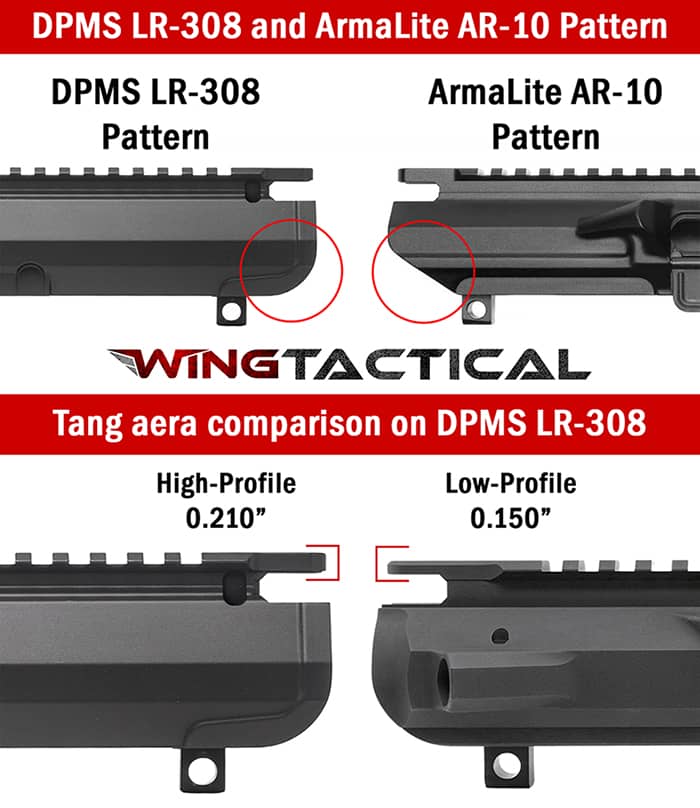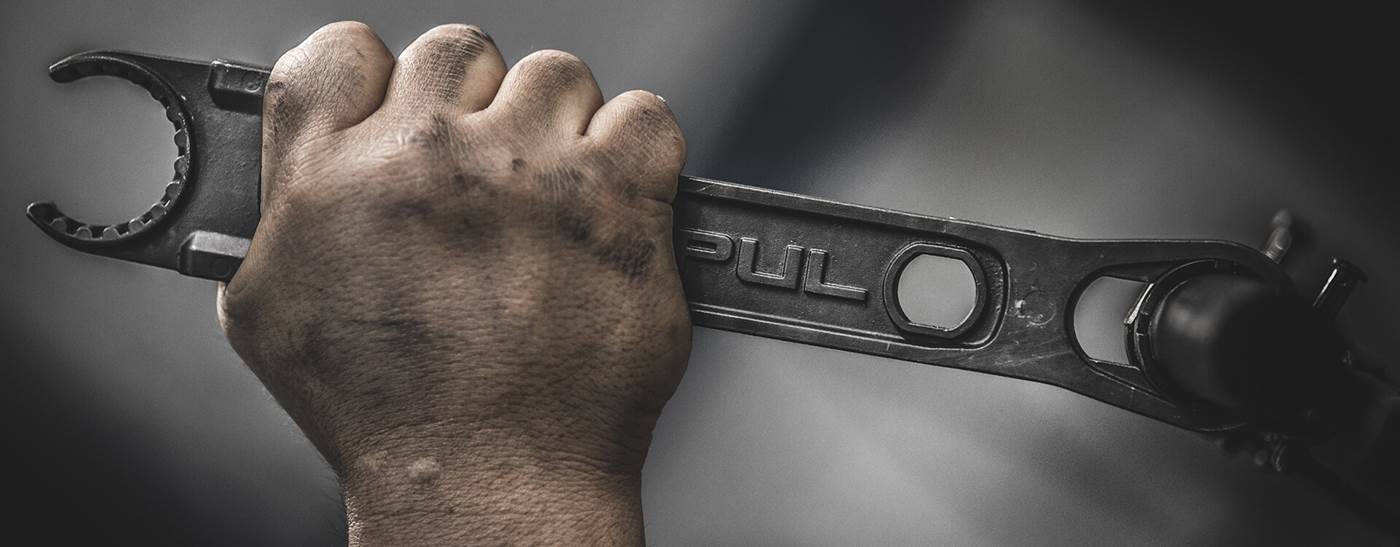
The AR-15 undeniably reigns supreme as the most cherished rifle in the United States. Its reputation is known far and wide among firearm enthusiasts. However, its elder sibling, the AR-10, remains a lesser-known gem. Preceding the AR-15, the AR-10 was initially conceived by Eugene Stoner. What sets it apart is its chambering in the larger 7.62x51 caliber, commonly referred to as .308 Winchester in civilian circles.
In the present times, numerous manufacturers produce AR-style rifles chambered in .308 Winchester. These rifles find extensive use among civilians and even law enforcement personnel, serving various purposes ranging from personal defense to target shooting. In this blog post, we shall delve into the essential considerations when building a .308 AR, examining the potential hurdles one may encounter during the process. Let's dive right in and explore!
A Brief History of .308 AR
The history of the AR platform starts with the .308 caliber. In the late 1950’s Eugene Stoner, an employee of Armalite, developed the first AR rifle, which was named the AR-10. Chambered in 7.62x51 Nato, the AR-10 was submitted to the US military for adoption. However, it was initially rejected. Still, it was adopted by multiple militaries around the world and showcased the innovative AR platform developed by Eugene Stoner. Subsequently, during the Vietnam War, the United States military embraced a compact rendition of the AR-10, chambered in the emerging 5.56x45 caliber. This variant, known as the AR-15, earned the military designations of M-16 and later M4.
.308 ARs were not as popular, especially after the development and military adaptation of the AR-15. However, it was still used by civilians and adopted by militaries in limited numbers around the world.
In 1995, Armalite was acquired by a company called Eagle Arms, which led to the revival of AR-10 production. During this period, they incorporated certain elements from modern AR-15 designs into the AR-10, further enhancing its features. In the early 2000s, Defense Procurement Manufacturing Services (DPMS) developed the LR-308 rifle, which was an AR pattern rifle chambered in 308. However, it had some slight differences from the AR-10. DPMS also sold manufacturing licenses to several other companies, which resulted in a boom in LR-308 pattern rifles.
So, these days DPMS LR-308 rifles are very common. They are made by several manufacturers and allow shooters to fire the powerful .308 Winchester cartridges in a familiar AR platform rifle.
Things To Consider When Building Your .308 AR
Building an AR-10 can be a mixed bag of experiences. Some folks find it a breeze, while others scratch their heads in confusion. Here's the deal: AR-style rifles are engineered like a dream, which means they're usually a breeze to put together. But hold your horses! Without doing your homework and being prepared for the challenges, building an AR-10 can lead to frustrating roadblocks along the way.
Now, don't you worry!
In this post, we won't subject you to the same repetitive information starting from square one. Instead, we'll dish out the scoop on the juicy bits specific to .308 ARs that you need to keep in your sights throughout the build. So, let's jump right in and kickstart this adventure!
Compatibility
First things first, when purchasing parts for your .308 AR build, it's crucial to ensure their compatibility Thanks to the military's adoption of the AR-15, a remarkable level of standardization exists among its parts and accessories. The majority of manufacturers in the industry follow Military Specifications (Mil-Spec) or design their components to be compatible with Mil-Spec AR-15s.
This is not the case with .308 ARs. Since there is no common Military Specification or another standard for .308 AR pattern rifles, different manufacturers use different specifications for their rifles, and this can cause some compatibility issues.
These days, there are two main .308 AR patterns that are common in the market. Firstly, you have the classic Armalite Pattern, and secondly, the DPMS LR-308 pattern. Both these patterns are very good and make excellent rifles. However, the DPMS pattern has the advantage of having better market support.
Since multiple manufacturers widely adopt the DPMS pattern, sourcing compatible parts and accessories is a breeze. However, keep in mind that DPMS pattern receivers can have two different profiles.
DPMS High Profile and Low Profile receivers are compatible with the same internal parts. However, the tang area and Picatinny rail section of High profile receivers are a little thicker than Low profile receivers. The tang on DPMS High Profile receives is about 0.210 inches, whereas on Low Profile receives, it is around 0.150 inches.
In most cases, Low profile and High profile parts will work with each other, but a mismatch often results in a sloppy fit. For example, you may encounter a loose fit between the lower and upper receiver, or the handguard won't sit flush with the Picatinny rail of the receiver. This can affect the overall reliability of your weapon and damage its performance as well.

The Difference Between AR-10 and LR-308 and How To Identify Them
Now, let's delve into the distinctions between the AR-10 and LR-308. After getting familiar with these two popular .308 AR patterns, it's crucial to understand their distinctions. At first glance, the rifles, especially their upper receivers, may appear similar, but a keen eye will notice a telling disparity. AR-10s feature an angular cut on the lower back end of the upper receiver, whereas the LR-308 sports a more rounded design.
The AR-10 and LR-308 are functionally quite different from each other as well, and almost none of the main components can be interchanged. The head spacing on the bolt carrier groups is different, and the gas tubes also tend to be longer on standard AR-10 pattern rifles. Handguards are also different for both patterns, along with the buffer assembly, barrel nut, and magazine catch.
Decisions You Must Make When Building a .308 AR

What Purpose Do You Want Your .308 AR To Serve?
Before you start your build, it's important to determine the intended purpose of your rifle. A .308 AR can be constructed in various configurations, each catering to specific needs such as close-quarters self-defense, hunting, or long-range shooting.
So, knowing the intended purpose of your rifle will help you buy the best possible parts for it. For instance, if you are building a .308 AR for self-defense, you will probably want a shorter barrel, a collapsible stock, and short-distance sights. For hunting, you may want a longer barrel for better range and a lightweight build that you can easily carry through long hunts. Similarly, if you are gearing towards long-distance precision shooting, you may also want to add a bi-pod, adjustable stock, and long-range optic.
So, before you start buying parts, or assembling them, decide what you want your .308 AR rifle to excel at.
Which Pattern to Choose? AR-10 or LR-308?
As mentioned before, both the AR-10 and LR-308 pattern makes for very high-quality rifles, especially if you use high-quality parts and build them properly. However, DPMS profile LR-308s are more common and have better aftermarket support.
That being said, there is a “Cool Factor” to owning an AR-10, especially when they are built like the original AR-10 rifles.
So, decide which pattern you prefer, and source all of your parts and accessories according to it.
Should You Buy a Complete Upper or Build Your Own?
When you are shopping for your .308 AR build, you have two options. You can either go for a pre-assembled upper or build your own. Both strategies have their pros and cons. For instance, if you get a pre-assembled upper, you don't have to worry too much about parts compatibility. Most complete uppers come with a preassembled barrel, handguard, and gas system, which are designed to work with each other.
On the other hand, if you build your own upper from different parts, you can control the performance of your rifle more effectively and fine-tune different aspects to work in your intended role perfectly. Building your own upper allows for a lot of customization. However, it can be a little difficult for new builders, and sometimes finding all the parts that perfectly go with each other can be a hassle as well.
Recommendations

Get The Right Tools
If you regularly work on your rifles and consider yourself a gun builder, you definitely have all the necessary tools required for it. However, if you are new to the world of gun building, you need to get the right tools.
There are several tools that you need to execute a .308 AR build properly, and here is a list of some of the most important ones.
- An armorers wrench and torque wrench
- An armorer's block or vise
- Roll pin punch set
- A punch set
- Basic tools like screwdrivers
The right tools help you build everything to spec, and have a more accurate and reliable firearm. However, if you don't use the right tools, you can easily over-torque parts and damage them or perhaps create safety concerns by leaving some parts too loose.
Use Quality Parts From Well-Known Manufacturers
Lastly, when you're putting together your rifle, it's crucial to use top-notch parts from reliable manufacturers. A rifle can be a life-saving tool, so it's essential to ensure that every component is of high quality and has undergone proper testing. Using subpar or defective parts can lead to disastrous failures, posing a risk not only to yourself but also to those around you. Safety should always be a top priority when building a firearm. Additionally, .308 isn't a small cartridge, so it is better to be safe than sorry and get quality parts.